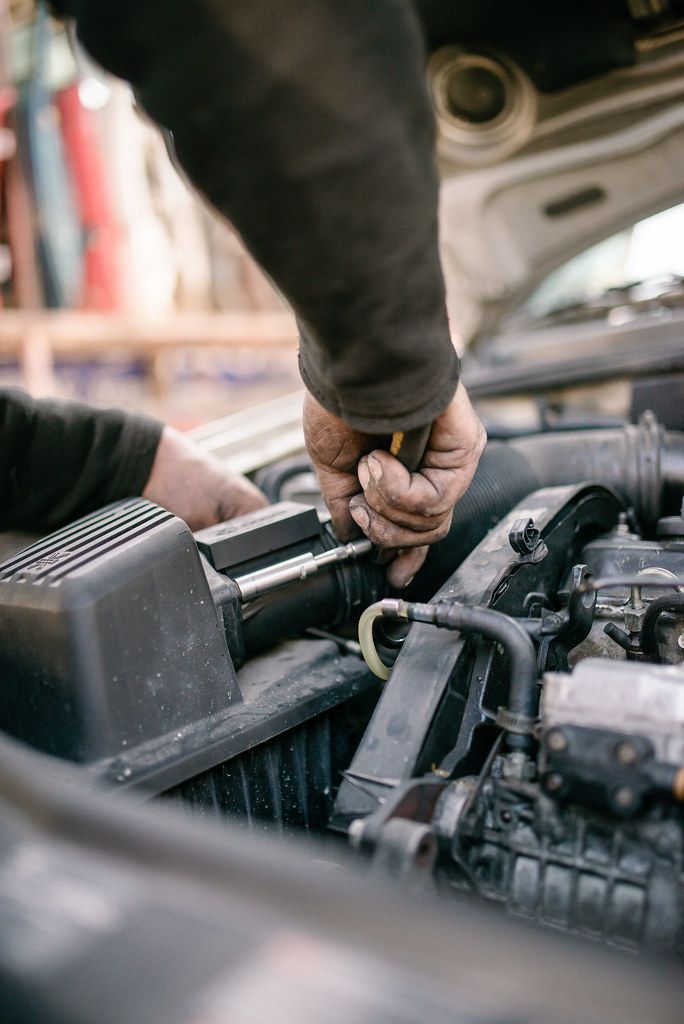Classic cars often evoke images of exclusive auction houses, multimillion-dollar bids, and collections reserved for the ultra-wealthy. This perception, while true for a sliver of the market, doesn’t tell the whole story. In a surprising turn, many iconic and beloved vehicles from past decades are now remarkably affordable, making the dream of classic car ownership a tangible reality for a broader spectrum of automotive enthusiasts. It’s time to dispel the myth that vintage motoring is an inaccessible luxury.
These budget-friendly classics offer a unique and compelling blend of timeless style, undeniable nostalgia, and a raw driving experience that modern cars, with all their digital sophistication, often simply cannot replicate. They represent a chance to connect with automotive history, to learn the mechanics of a simpler era, and to stand out on the road without breaking the bank. From American muscle to nimble European roadsters, the market holds treasures for those willing to look beyond the headlines of seven-figure sales.
As seasoned automotive experts, we’ve delved deep into the current landscape to present a curated selection of surprisingly affordable classic cars. Each vehicle on our list has been chosen for its enduring appeal, practical maintenance, and the sheer joy it brings to its owner, proving that an iconic ride doesn’t have to come with a hefty price tag. Let’s embark on an insightful journey to discover these accessible automotive legends, offering a thrilling blend of performance, style, and surprising affordability for today’s discerning enthusiasts.
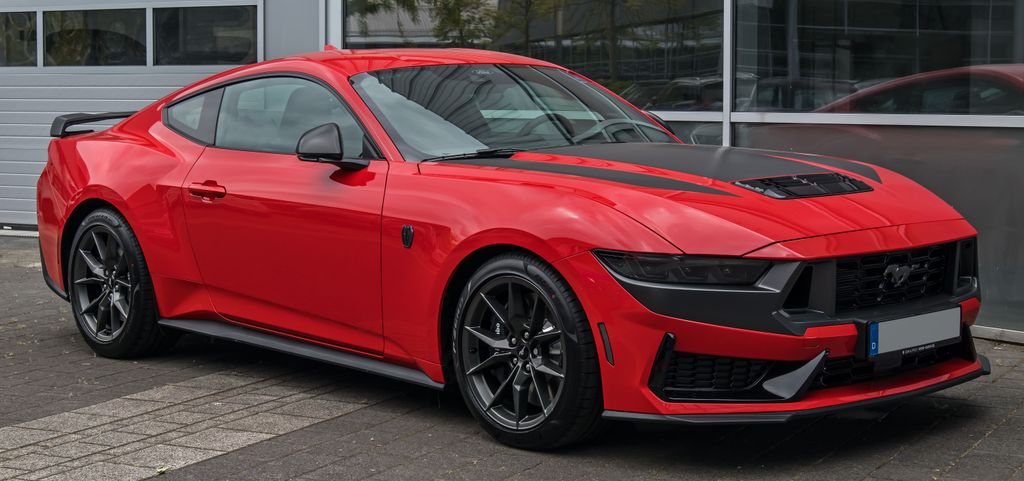
1. **Ford Mustang**The first-generation Ford Mustang stands as an undisputed icon of American muscle cars, and surprisingly, it remains within reach for many enthusiasts. First released in 1964, it quickly became a cultural phenomenon, celebrated for its sleek design and the promise of powerful engines under its hood. This vehicle practically defined an era of automotive design, capturing the spirit of freedom and performance.
What makes the early Mustang particularly appealing today is its affordability and accessibility for new classic car owners. You can still find many well-kept examples from this pivotal era at reasonable prices. These cars are not only inherently fun to drive, but they are also notably easy to work on, thanks to their straightforward mechanics and the vast availability of aftermarket parts. This combination makes them ideal for anyone looking to dip their toes into classic car ownership.
From its inception, the original Mustang was intentionally designed to be accessible, leading to an abundance of units produced. This widespread availability continues to contribute to their current affordability and the ease with which parts can be sourced, solidifying its status as a quintessential yet budget-friendly piece of American automotive history.
Car Model Information: 1966 Ford Mustang Base
Name: Ford Mustang
Caption: 2018 Ford Mustang GT 5.0
Aka: Ford T5 (Germany)
Manufacturer: Ford Motor Company
Production: March 1964 – present
ModelYears: 1965–present
Class: Unbulleted list
BodyStyle: Unbulleted list
Layout: Front-engine, rear-wheel-drive layout
Categories: 1970s cars, 1980s cars, 1990s cars, 2+2 coupés, 2000s cars
Summary: The Ford Mustang is a series of American automobiles manufactured by Ford. In continuous production since 1964, the Mustang is currently the longest-produced Ford car nameplate. Currently in its seventh generation, it is the fifth-best selling Ford car nameplate. The namesake of the “pony car” automobile segment, the Mustang was developed as a highly styled line of sporty coupes and convertibles derived from existing model lines, initially distinguished by “long hood, short deck” proportions.
Originally predicted to sell 100,000 vehicles yearly, the 1965 Mustang became the most successful vehicle launch since the 1927 Model A. Introduced on April 17, 1964 (16 days after the Plymouth Barracuda), over 400,000 units were sold in its first year; the one-millionth Mustang was sold within two years of its launch. In August 2018, Ford produced the 10-millionth Mustang; matching the first 1965 Mustang, the vehicle was a 2019 Wimbledon White convertible with a V8 engine.
The success of the Mustang launch led to multiple competitors from other American manufacturers, including the Chevrolet Camaro and Pontiac Firebird (1967), AMC Javelin (1968), and Dodge Challenger (1970). It also competed with the Plymouth Barracuda, which was launched around the same time. The Mustang also had an effect on designs of coupes worldwide, leading to the marketing of the Toyota Celica and Ford Capri in the United States (the latter, by Lincoln-Mercury). The Mercury Cougar was launched in 1967 as a unique-bodied higher-trim alternative to the Mustang; during the 1970s, it included more features and was marketed as a personal luxury car.
From 1965 until 2004, the Mustang shared chassis commonality with other Ford model lines, staying rear-wheel-drive throughout its production. From 1965 to 1973, the Mustang was derived from the 1960 Ford Falcon compact. From 1974 until 1978, the Mustang (denoted Mustang II) was a longer-wheelbase version of the Ford Pinto. From 1979 until 2004, the Mustang shared its Fox platform chassis with 14 other Ford vehicles (becoming the final one to use the Fox architecture). Since 2005, Ford has produced two generations of the Mustang, each using a distinct platform unique to the model line.
Through its production, multiple nameplates have been associated with the Ford Mustang series, including GT, Mach 1, Boss 302/429, Cobra (separate from Shelby Cobra), and Bullitt, along with “5.0” fender badging (denoting 4.9 L OHV or 5.0 L DOHC V8 engines).
Get more information about: Ford Mustang
Buying a high-performing used car >>>
Brand: Ford Model: Mustang
Price: $32,991 Mileage: 98,810 mi.
Read more about: The Software Guru Behind a Viral Retirement Calculator Reveals Her ‘Boring’ Secrets to Financial Independence
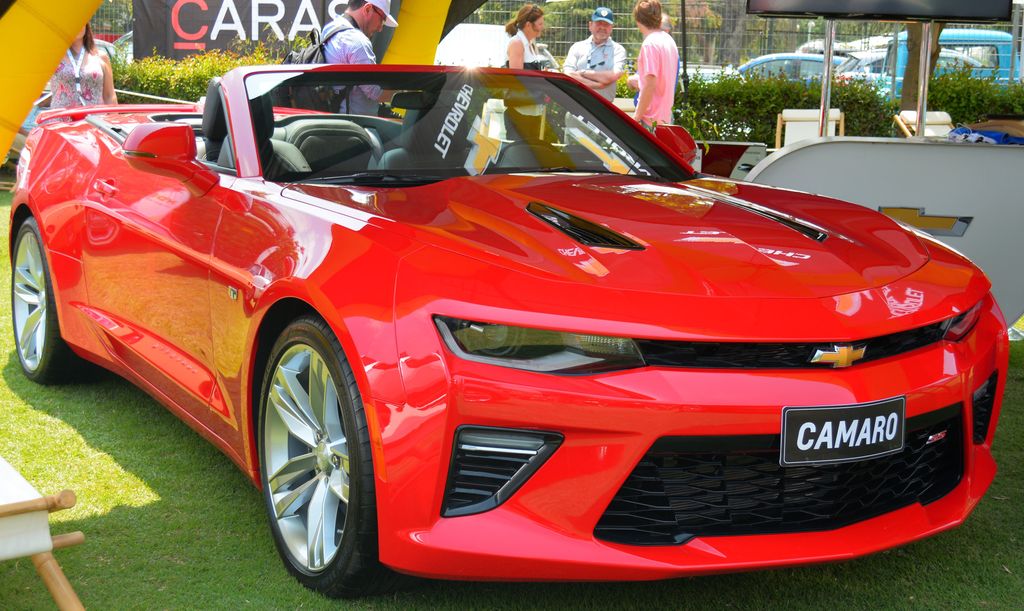
2. **Chevrolet Camaro**Following in the tire tracks of its pony car rival, the second-generation Chevrolet Camaro, produced from 1970 to 1981, offers another compelling proposition for the classic car enthusiast on a budget. This iteration of the Camaro boasts a bold, muscular look that continues to command attention and turn heads wherever it goes. It represents a distinctive period in American automotive design, blending aggressive styling with raw power.
One of the significant advantages of owning a second-gen Camaro is the variety of engine options that were available, ranging from more fuel-efficient choices to high-performance V8 configurations. This diversity allows buyers to choose a model that best suits their preferences for power and driving dynamics. Crucially, parts for these cars are remarkably easy to find, which considerably simplifies both routine maintenance and more extensive upgrades, making it a practical classic.
Many car fans consistently express their admiration for the Chevrolet Camaro, specifically praising its compelling mix of assertive style and potent power. Its enduring appeal lies in its ability to deliver a classic muscle car experience without the prohibitive costs often associated with its contemporaries, cementing its place as an accessible legend.
Car Model Information: 2018 Chevrolet Camaro 1LS
Name: Chevrolet Camaro
Manufacturer: Chevrolet
Production: 1966–2002,2009–2023
ModelYears: 1967–2002,2010–2024
Class: Pony car
BodyStyle: coupe,convertible
Platform: GM F platform,GM Zeta platform,GM Alpha platform
Layout: Front-engine, rear-wheel-drive layout
Categories: 1970s cars, 1980s cars, 1990s cars, 2+2 coupés, 2000s cars
Summary: The Chevrolet Camaro is a mid-size American automobile manufactured by Chevrolet, classified as a pony car. It first went on sale on September 29, 1966, for the 1967 model year and was designed to compete with the Ford Mustang. The Camaro shared its platform and major components with the Firebird, produced by General Motors’ Pontiac division that was also introduced for the 1967 model year.
Four distinct generations of the Camaro were developed before production ended in 2002. The nameplate was revived on a concept car that evolved into the fifth-generation Camaro; production started on March 16, 2009.
Production of the sixth generation of the Camaro ended in December 2023, for the 2024 model year.
Get more information about: Chevrolet Camaro
Buying a high-performing used car >>>
Brand: Chevrolet Model: Camaro
Price: $19,125 Mileage: 69,196 mi.
Read more about: 12 Iconic Rides from Movies & TV That Drove Straight Into Our Hearts
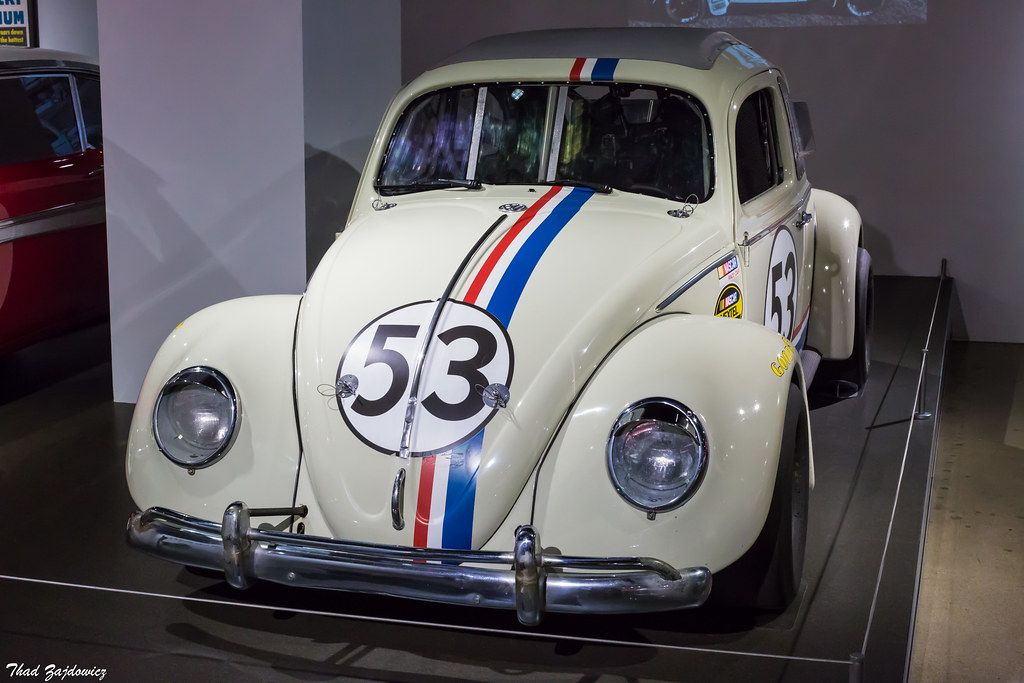
3. **Volkswagen Beetle**The Volkswagen Beetle holds a unique position in automotive history as one of the most universally recognizable cars ever manufactured. Its distinctive, rounded shape is instantly identifiable and affectionately known by people across the globe, transcending cultural and geographical boundaries. This ubiquitous presence contributes significantly to its timeless charm and enduring popularity among classic car collectors.
Beyond its iconic aesthetics, the Beetle is celebrated for its practicality and mechanical simplicity. These cars are notably small, incredibly easy to drive, and remarkably fuel-efficient, making them perfect for relaxed cruising or zipping around town. Furthermore, their straightforward mechanical design makes them an excellent choice for individuals who are keen to learn about car repairs and maintenance firsthand, offering an accessible entry point into automotive mechanics.
Today, it is still possible to find many well-maintained Volkswagen Beetles at surprisingly affordable prices. The vast and passionate global fan base surrounding the Beetle ensures that parts and support are readily available, creating a welcoming community for new owners. This combination of vintage design, reliability, and undeniable charm makes the Beetle a truly timeless and budget-friendly classic.
Car Model Information: 1971 Volkswagen Super Beetle Base
Sp: uk
Name: Volkswagen Type 1,”Beetle”
Caption: 1965–1966 Volkswagen Käfer
Manufacturer: Volkswagen
Alt: A front-three quarters view of a pale-yellow Volkswagen Käfer. It features 165/80R15 tires, which shod 15×4. 5″ silver, circular wheels. The Käfer features a beetle-like body, and its window is open. The picture is taken with much greenery in the background, and the photo was edited to give it a more warmer tone.
Aka: List of names for the Volkswagen Type 1
Assembly: #Markets and assembly
Designer: Ferdinand Porsche
Class: Small family car
BodyStyle: Sedan (automobile),convertible
Production: 1938–2003,21,529,464 produced
Successor: Volkswagen Golf Mk1,Volkswagen Gol#First generation (Typ30, 1980),Volkswagen New Beetle
Layout: Rear-engine, rear-wheel-drive layout
Engine: Petrol,Volkswagen air-cooled engine,1192 cc H4,1285 cc H4,1493 cc H4,1584 cc H4
Transmission: manual transmission,Saxomat,Autostick
Wheelbase: convert
Length: convert
Width: convert
Height: 1500 mm
Abbr: on
Weight: convert
Categories: 1940s cars, 1950s cars, 1960s cars, 1970s cars, 1980s cars
Summary: The Volkswagen Beetle, officially the Volkswagen Type 1, is a small family car produced by the German company Volkswagen from 1938 to 2003. Considered a global cultural icon, the Beetle is widely regarded as one of the most influential cars of the 20th century. Its production period of 65 years is the longest of any single generation of automobile, and its total production of over 21.5 million is the most of any car of a single platform and the second-most of any nameplate produced in the 20th century.
The Beetle was conceived in the early 1930s. The leader of Nazi Germany, Adolf Hitler, decided there was a need for a people’s car—an inexpensive, simple, mass-produced car—to serve Germany’s new road network, the Reichsautobahn. The German engineer Ferdinand Porsche and his design team began developing and designing the car in the early 1930s, but the fundamental design concept can be attributed to Béla Barényi in 1925, predating Porsche’s claims by almost ten years. The result was the Volkswagen Type 1 and the introduction of the Volkswagen brand. Volkswagen initially slated production for the late 1930s, but the outbreak of war in 1939 meant that production was delayed until the war had ended. The car was originally called the Volkswagen Type 1 and marketed simply as the Volkswagen. It was not until 1968 that it was officially named the “Beetle”.
Volkswagen implemented designations for the Beetle in the 1960s, including 1200, 1300, 1500, 1600, 1302, and 1303. Volkswagen introduced a series of large luxury models throughout the 1960s and 1970s—comprising the Type 3, Type 4 and K70—to supplement the Beetle, but none of these models achieved the level of success that it did. Rapidly changing consumer preferences toward front-wheel drive compact hatchbacks in Europe prompted Volkswagen’s gradual shift away from rear-wheel drive, starting with the Golf in 1974. In the late 1970s and ’80s, Japanese automakers began to dominate some markets around the world, which contributed to the Beetle’s declining popularity.
Over its lifespan, the Beetle’s design remained consistent, yet Volkswagen implemented over 78,000 incremental updates. These modifications were often subtle, involving minor alterations to its exterior, interior, colours, and lighting. Some more noteworthy changes included the introduction of new engines, models and systems, such as improved technology or comfort. The Beetle maintains a substantial cultural influence and is regarded as one of the most iconic vehicles in automotive history; its success largely influenced the way automobiles are designed and marketed, whilst propelling Volkswagen’s introduction of a Golf-based series of vehicles.
Get more information about: Volkswagen Beetle
Buying a high-performing used car >>>
Brand: Volkswagen Model: Beetle
Price: $18,999 Mileage: 96,000 mi.
Read more about: 12 Iconic Rides from Movies & TV That Drove Straight Into Our Hearts
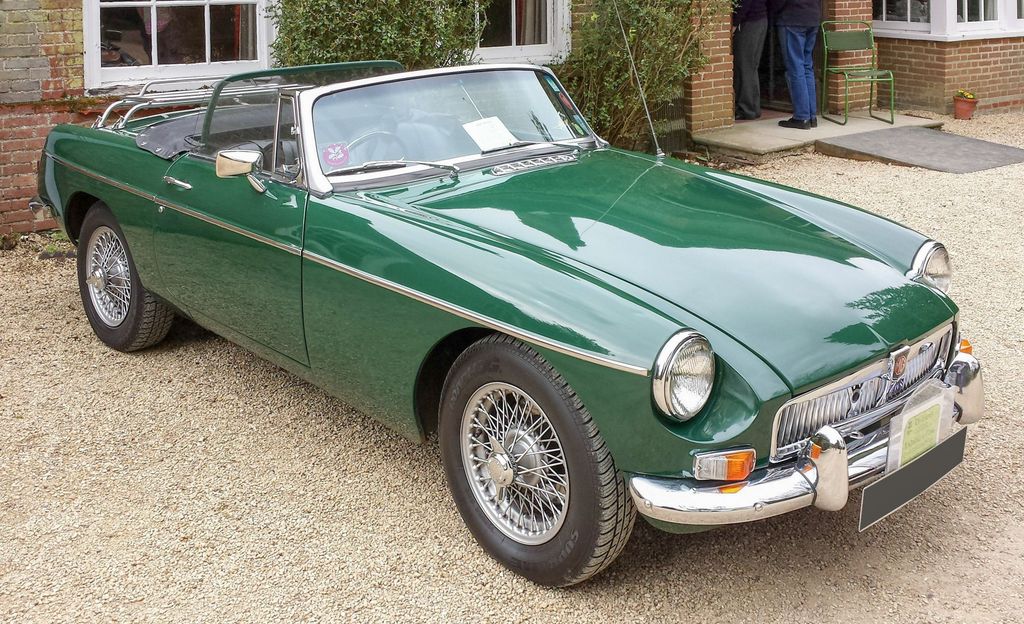
4. **MGB Roadster**For those who dream of open-top motoring with a distinctly British flair, the MGB Roadster presents an outstanding and highly accessible option. Manufactured from 1962 to 1980, this classic British sports car delivers an immense amount of driving fun for a relatively small financial outlay. It is widely recognized for its simple yet elegant design, epitomizing the quintessential European roadster.
The MGB is a charming two-seater convertible, perfectly suited for invigorating sunny weekend drives through scenic routes. Its enduring appeal is not just in its looks but also in its mechanical simplicity, which makes these cars relatively easy for owners to work on. This hands-on approach is further supported by a large and dedicated fan base, ensuring an abundance of technical advice, shared knowledge, and, most importantly, ready availability of parts.
With over half a million units produced worldwide, the sheer volume of MGBs means that prices have remained commendably low, making them incredibly accessible. You can still find a decent driver for around $7,000, offering that desirable vintage look and driving feel without the significant financial stress often associated with classic car ownership.
Car Model Information: 2020 BMW X3 xDrive30i
Name: MGB
Caption: 1969 MGB roadster – rollover bar non-standard
Layout: FR layout
Manufacturer: British Motor Corporation,British Leyland,Rover Group
Production: 1962–1980 (original),1992–1995 (MG RV8)
Predecessor: MG MGA
Successor: MG F / MG TF
Class: Sports car
Assembly: Abingdon, Oxfordshire,Enfield, New South Wales,Cowley, Oxford
Categories: 1970s cars, 1980s cars, 1990s cars, All articles lacking reliable references, All articles with unsourced statements
Summary: The MGB is a two-door sports car manufactured and marketed from 1962 until 1980 by the British Motor Corporation (BMC), later the Austin-Morris division of British Leyland, as a four-cylinder, soft-top sports car sold under the MG marque. It was announced and its details first published on 19 September 1962. Variants include the MGB GT three-door 2+2 coupé (1965–1980), the six-cylinder sports car and coupé MGC (1967–1969), and the eight-cylinder 2+2 coupé, the MGB GT V8 (1973–1976).
Replacing the MGA in 1962, production of the MGB and its variants continued until 1980, though fixed roof GT models ceased export to the US in 1974. Sales for the MGB, MGC and MGB GT V8 combined totaled 523,836 cars. After a 12-year hiatus, the MGB re-entered production as the heavily modified MG RV8 with a limited run of 2,000 cars before its final replacement in 1995 by the MG F.
Get more information about: MG MGB
Buying a high-performing used car >>>
Brand: MG Model: MGB Roadster
Price: $19,649 Mileage: 66,810 mi.
Read more about: Decades of Dust, Gears, and Dreams: Unearthing Hidden Classic and Sports Cars from Abandoned Estates
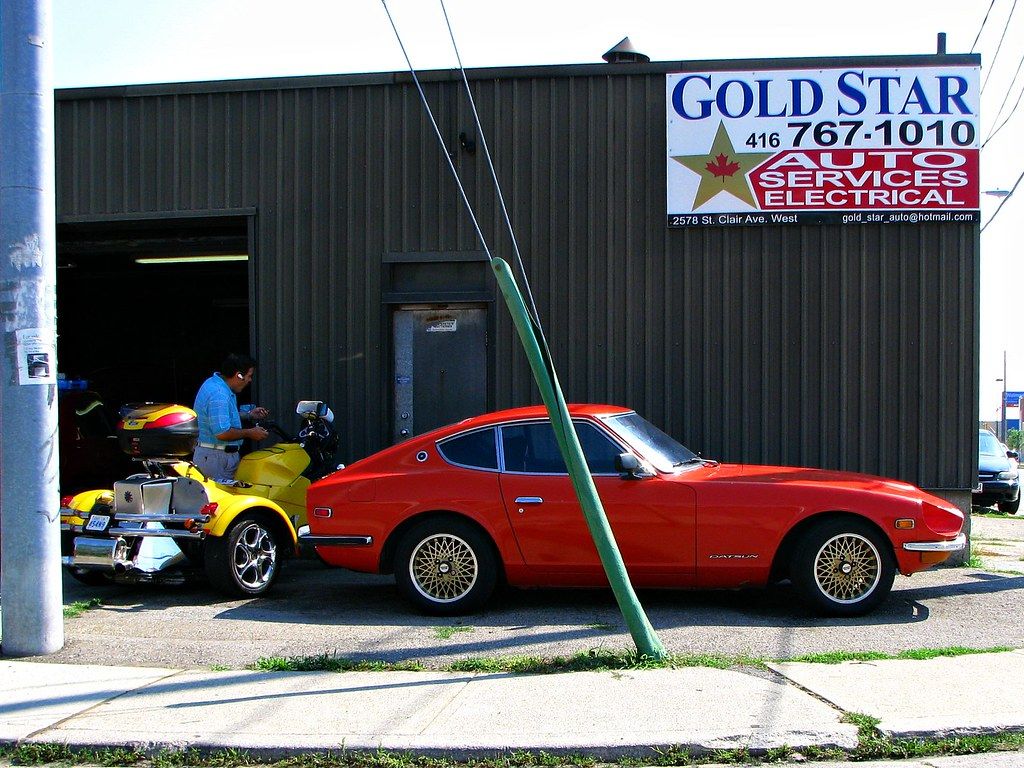
5. **Datsun 240Z**The Datsun 240Z, first introduced in 1969, emerged as Japan’s compelling answer to the established European sports car market, and it successfully brought affordable high-performance to a wider audience. Its sleek, long-nosed design continues to impress today, maintaining a modern aesthetic despite its age. This car masterfully blended Japanese reliability with European-inspired styling, creating a truly unique package.
Underneath its appealing exterior, the 240Z is renowned for its remarkably balanced handling and a peppy six-cylinder engine that delivers an engaging driving experience. While prices for pristine examples have experienced an uptick in recent years, it remains entirely possible to find well-preserved Datsun 240Zs at reasonable prices. This car offers a genuinely fun driving dynamic and benefits from a steadily growing fan base, which indicates its increasing appreciation in the classic car community.
Its enduring desirability as a classic stems from its blend of striking design, athletic performance, and surprisingly accessible entry point into the sports car world. The Datsun 240Z stands as a testament to thoughtful engineering and remains a smart choice for enthusiasts looking for a piece of automotive history that won’t entirely deplete their savings.
Car Model Information: 1972 Datsun 240Z
Name: Nissan Fairlady Z (Datsun 240Z, 260Z, and 280Z)
Aka: unbulleted list
Manufacturer: Nissan
Production: 1969–1978
Class: Sports car
Layout: Front-engine, rear-wheel-drive layout
Assembly: Hiratsuka, Kanagawa
BodyStyle: unbulleted list
Designer: Yoshihiko Matsuo
Predecessor: Datsun Sports
Successor: Nissan Fairlady Z (S130)
Caption: 1970–1973 Nissan Fairlady Z
Categories: 1970s cars, All Wikipedia articles written in American English, All articles with unsourced statements, Articles with short description, Articles with unsourced statements from February 2021
Summary: The Nissan S30, sold in Japan as the Nissan Fairlady Z but badged as the Datsun 240Z, 260Z, and 280Z for export, are 2-seat sports cars and 2+2 GT cars produced by Nissan from 1969 until 1978. The S30 was conceived of by Yutaka Katayama, the President of Nissan Motor Corporation U.S.A., and designed by a team led by Yoshihiko Matsuo, the head of Nissan’s Sports Car Styling Studio. It is the first car in Nissan’s Z series of sports cars.
The S30 had four-wheel independent suspension and a powerful straight-six engine with an overhead camshaft, features identified with far more expensive premium European sports cars and coupés such as the Jaguar E-Type and BMW 2800 CS, but absent from similarly priced sports cars such as the Alfa Romeo Spider, MGB and Opel GT, which had smaller four-cylinder engines and rear live axles. The S30’s styling, engineering, relatively low price, and impressive performance resonated with the public, received a positive response from both buyers and the motoring press, and immediately generated long waiting lists.
As a halo car, the S30 broadened the acceptance of Japanese carmakers beyond their image as producers of practical and reliable but prosaic and unfashionable economy cars. Datsun’s growing dealer network—compared to limited production imported sports cars manufactured by Jaguar, BMW, Porsche, Alfa Romeo, and Fiat—ensured both easy purchase and ready maintenance.
The S30 was initially sold alongside the smaller four-cylinder Datsun Sports, which was dropped from production in 1970. The S30 240Z is unrelated to the later 240SX, sold as the Silvia in Japan.
Get more information about: Nissan Fairlady Z (S30)
Buying a high-performing used car >>>
Brand: Datsun Model: 240Z
Price: $33,999 Mileage: 122,000 mi.
Read more about: Decades of Dust, Gears, and Dreams: Unearthing Hidden Classic and Sports Cars from Abandoned Estates

6. **Pontiac Firebird**For enthusiasts craving the iconic silhouette and performance presence of a classic American muscle car without the exorbitant price tag, the Pontiac Firebird, especially models from its second generation (1970-1981), presents an excellent value proposition. This era of the Firebird shares many fundamental components with its close relative, the Chevrolet Camaro, a commonality that significantly eases the process of repairs and parts sourcing.
The Firebird line offered a diverse range of models, catering to various preferences, from practical daily commuters to the exhilarating, high-performance Trans Am variants. Regardless of the specific trim, these cars all share a strong, eye-catching design that continues to impress and draw admiring glances today. Its bold styling truly captures the essence of the muscle car era, projecting an aura of power and confidence on the road.
Numerous car fans consistently express their affection for the Pontiac Firebird, particularly for its audacious style and the potent engines that were available. Even models like the Esprit, which often play second fiddle to the more celebrated Trans Am, deliver a remarkably similar stylistic punch and road presence, often at a more appealing price point. This makes the Firebird a smart bet for acquiring that coveted classic F-body look and sound on a budget.
Car Model Information: 1983 Pontiac Firebird Trans Am 2D Coupe
Name: Pontiac Firebird
Caption: The second, third, and fourth generations of,the Pontiac Firebird Trans Am
Manufacturer: Pontiac (automobile)
Production: February 23, 1967 – August 30, 2002
ModelYears: 1967 – 2002
Class: Pony car,Muscle car
Platform: GM F platform
Related: Chevrolet Camaro
Layout: Front engine, rear-wheel-drive layout
Categories: 1970s cars, 1980s cars, 1990s cars, 2000s cars, All articles with dead external links
Summary: The Pontiac Firebird is an American automobile built and produced by Pontiac from the 1967 to 2002 model years. Designed as a pony car to compete with the Ford Mustang, it was introduced on February 23, 1967, five months after GM’s Chevrolet division’s platform-sharing Camaro. This also coincided with the release of the 1967 Mercury Cougar, Ford’s upscale, platform-sharing version of the Mustang.
The name “Firebird” was also previously used by GM for the General Motors Firebird series of concept cars in the 1950s.
Get more information about: Pontiac Firebird
Buying a high-performing used car >>>
Brand: Pontiac Model: Firebird
Price: $22,991 Mileage: 38,257 mi.
Read more about: I’m a Mechanic: Some Cars Experts Would Never Buy (and Why You Should Avoid Them Too)

7. **Porsche 944**For many automotive enthusiasts, the allure of Porsche ownership often comes with the intimidating reality of steep price tags, especially for models like the iconic 911. However, the Porsche 944 stands out as a remarkable exception, offering a genuine Porsche experience at a fraction of the cost. Produced from 1982 to 1991, the 944 boasts a sleek, aerodynamic design that has aged gracefully, still appearing modern and purposeful today.
The 944 is highly regarded for its exceptional balance and precise handling characteristics, making it an absolute joy to drive, particularly on winding roads where its engineering prowess truly shines. Its front-engine, rear-wheel-drive layout and balanced weight distribution contribute to an engaging and predictable driving experience, a hallmark of Porsche’s performance philosophy. While it may not possess the legendary agility of its more expensive 911 cousin, it compensates with beautiful handling and a timeless aesthetic.
Despite the potential for parts to be somewhat pricier compared to some other vehicles on this list, the 944 remains one of the most accessible pathways to owning a classic Porsche. It represents a perfect blend of performance, handling, and surprising affordability, allowing enthusiasts to experience the renowned German engineering and driving dynamics without needing to break the bank. Owning a 944 is a testament to discerning taste and smart collecting.
Continuing our journey through budget-friendly classics, this segment uncovers seven more distinctive vehicles, highlighting their unique attributes, historical significance, and continued appeal to collectors and drivers alike. From nimble roadsters to rugged pickups and understated European sedans, these selections further prove that the dream of owning a piece of automotive history is well within reach for the discerning enthusiast. Each car on this list boasts a unique character and a compelling story, inviting you to discover the joy of vintage motoring without the extravagant price tag.
Car Model Information: 1990 Porsche 944 S2 Cabriolet
Caption: 1986 944 Turbo (951) US-spec
Name: Porsche 944
Manufacturer: Porsche AG
Class: Sports car
Production: 1982–1991
Layout: Front-engine, rear-wheel-drive layout
Assembly: Neckarsulm,Stuttgart
Designer: Harm Lagaay
Predecessor: Porsche 924
Successor: Porsche 968
BodyStyle: coupé,convertible
Engine: Straight-four engine,Turbocharger,2.7 L M44/12 I4,3.0 L M44/41 I4
Wheelbase: 2400 mm
Abbr: on
Length: 1986–1988: {{convert,4318,mm,in,1,abbr=on
Width: 1735 mm
Height: 1275 mm
transmission: Automatic transmission,Manual transmission
Weight: Pre-1988: {{convert,1180,kg,lb,0,abbr=on
Categories: 1990s cars, All articles needing additional references, All articles with unsourced statements, Articles needing additional references from September 2024, Articles with short description
Summary: The Porsche 944 is a sports car manufactured by German automobile manufacturer Porsche from 1982 until 1991. A front-engine, rear-wheel drive mid-level model based on the 924 platform, the 944 was available in coupé or cabriolet body styles, with either naturally aspirated or turbocharged engines. With over 163,000 cars produced, the 944 was the most successful sports car in Porsche’s history until the introductions of the Boxster and 997 Carrera.
Extensive design revisions for the 1992 model year prompted Porsche to drop the 944 nameplate and rebrand the vehicle as the 968.
Get more information about: Porsche 944
Buying a high-performing used car >>>
Brand: Porsche Model: 944
Price: $17,900 Mileage: 96,579 mi.
Read more about: The Software Guru Behind a Viral Retirement Calculator Reveals Her ‘Boring’ Secrets to Financial Independence
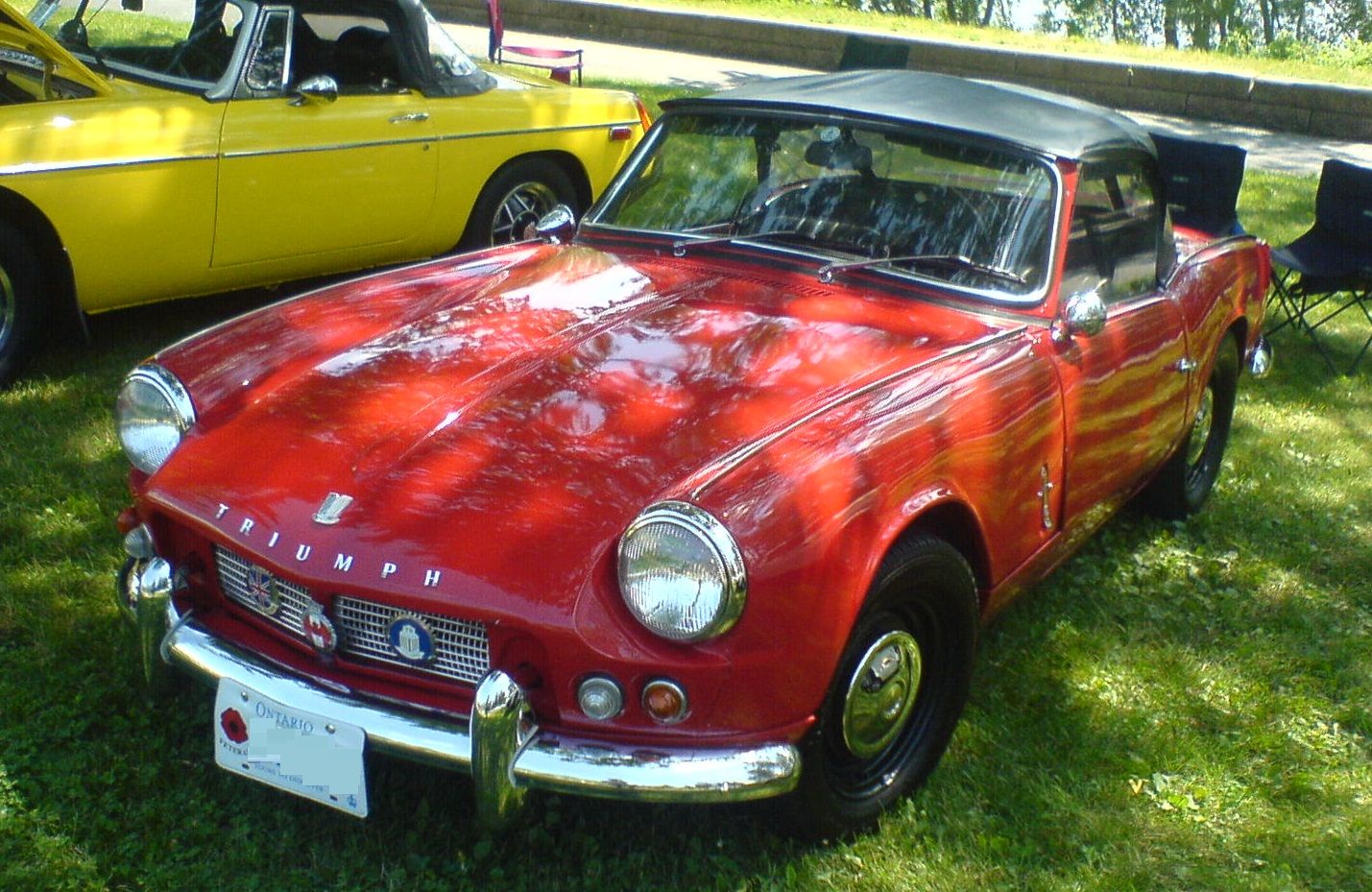
8. **Triumph Spitfire**For those who crave the pure, unadulterated joy of open-air motoring on a modest budget, the Triumph Spitfire stands as an undeniable British gem. Produced from 1962 to 1980, this small sports car, renowned for its cute looks and nimble handling, offers a surprisingly large dose of driving fun. It embodies the essence of a classic roadster, providing an intimate connection to the road that is often lost in more modern vehicles.
The Spitfire truly excels when zipping around town or carving through winding country roads. Its lightweight nature and direct steering provide an engaging and spirited driving experience that makes every journey an adventure. Beyond its delightful dynamics, the Spitfire is also remarkably simple to work on, making it an excellent choice for aspiring mechanics or those who prefer a hands-on approach to their classic car ownership.
A vibrant and dedicated community of Triumph Spitfire fans ensures that technical advice, shared knowledge, and, most importantly, parts, are readily available. This robust support network significantly simplifies the ownership experience, allowing enthusiasts to maintain and enjoy these charming vehicles without excessive hassle or expense. The Spitfire is a testament to the fact that immense fun can indeed come in a small, affordable package.
Car Model Information: 1974 Triumph Spitfire 1500
Caption: Triumph Spitfire 1500 (European market)
Name: Triumph Spitfire
Manufacturer: Standard Motor Company,Triumph Motor Company
Production: 1962–1980
BodyStyle: Convertible
Layout: FR layout
Assembly: ubl
Length: cvt
Width: cvt
Height: cvt
Wheelbase: cvt
Weight: cvt
Related: Triumph Herald,Triumph Vitesse,Triumph GT6
Designer: Giovanni Michelotti
Class: Sports car
Sp: uk
Categories: 1970s cars, 1980s cars, 24 Hours of Le Mans race cars, All articles with unsourced statements, Articles with short description
Summary: The Triumph Spitfire is a British sports car manufactured over five production iterations between 1962 and 1980. Styled for Standard-Triumph in 1957 by Italian designer Giovanni Michelotti, the Spitfire was introduced at the London Motor Show in 1962. It was manufactured at the Standard-Triumph Canley works, with approximately 315,000 produced over 18 years.
Developed on a shortened variant of the Triumph Herald saloon’s chassis, the Spitfire shared the Herald’s running gear and Standard SC engine. The design used body-on-frame construction, augmented by structural components within the bodywork and rear trailing arms attached to the body rather than the chassis. A manually deployable convertible top, substantially improved on later models, provided weather protection and a bespoke hard-top was available as a factory option.
The model was named after the famed Supermarine Spitfire fighter plane of World War II.
Get more information about: Triumph Spitfire
Buying a high-performing used car >>>
Brand: Triumph Model: Spitfire
Price: $13,000 Mileage: 15,156 mi.
Read more about: 15 Cars From the 1960s That History Would Rather Forget
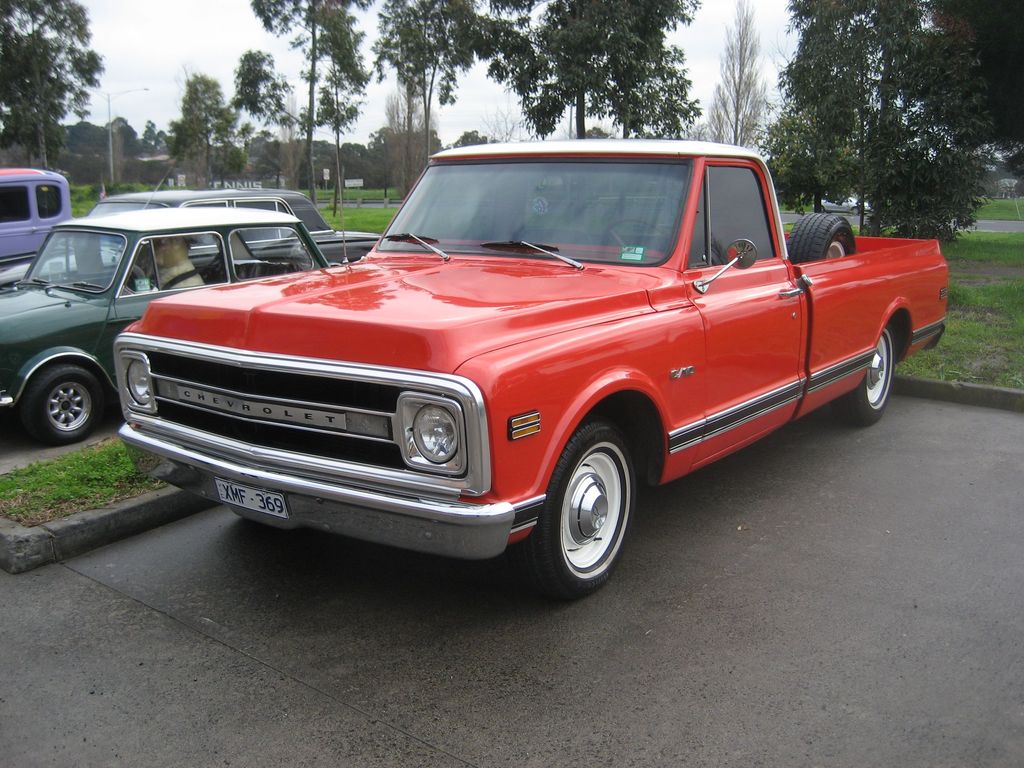
9. **Chevrolet C10 Pickup**The Chevrolet C10 pickup truck, particularly models from the 1967-1972 era, has transcended its utilitarian origins to become a celebrated classic in the automotive world. These trucks are highly sought after for their simple, rugged design that embodies a timeless American aesthetic, appealing to a wide range of enthusiasts. Their robust construction and straightforward mechanicals have ensured their enduring presence on roads and at car shows alike.
While undeniably practical, offering ample room for hauling and daily chores, the C10 also boasts an impressive visual appeal when properly restored or customized. Their clean lines and versatile platform lend themselves perfectly to various modifications, from period-correct restorations to modern restomods. This adaptability contributes significantly to their popularity among owners who seek both utility and style.
The ease with which C10s can be worked on, combined with a plentiful supply of aftermarket and original equipment parts, makes them an incredibly accessible classic. This practicality means that many enthusiasts choose to use their C10s as reliable daily drivers, while others transform them into show-stopping custom trucks, demonstrating the vast potential and broad appeal of these iconic pickups.
Car Model Information: 2020 BMW X3 xDrive30i
Name: Third generation
Aka: Chevrolet/GMC R/V series (1987-1991) , Chevrolet/GMC Full-Size Pickup
Production: 1972–1991 (United States, Canada, Mexico, Venezuela),1974–1978 (Argentina, by Chevrolet),1985–1991 (Argentina, by Sevel),1985–1997 (GM Brasil)
Assembly: Baltimore Assembly,Baltimore,Flint Truck Assembly,Flint, Michigan,Fremont Assembly,Fremont, California,Janesville Assembly,Janesville, Wisconsin,Lakewood Assembly,Lakewood Heights, Atlanta,Atlanta,Pontiac, Michigan,St. Louis Truck Assembly,St. Louis, Missouri,Oshawa Truck Assembly,Oshawa, Ontario,Canada,Toluca,State of Mexico,Mexico,San Martín, Buenos Aires,Argentina
Engine: Chevrolet Turbo-Thrift engine#250,straight-6,Chevrolet Turbo-Thrift engine#292
Abbr: on
Transmission: Turbo-Hydramatic#THM350,Automatic transmission
Wheelbase: 117.5 in
Length: 191.5 in
Height: 69.8 in
Designer: Bill Mitchell (automobile designer)
Related: Chevrolet K5 Blazer,Chevrolet Suburban
BodyStyle: Chassis cab
ModelYears: 1973–1991
Predecessor: Chevrolet C/K (second generation)
Successor: Chevrolet C/K (fourth generation)
Caption: 1982 Chevrolet C20 Silverado Camper Special
Categories: All articles with unsourced statements, Articles with short description, Articles with unsourced statements from August 2020, Chevrolet trucks, Commons category link is locally defined
Summary: The third generation of the C/K series is a range of trucks that was manufactured by General Motors from the 1973 to 1991 model years. Serving as the replacement for the “Action Line” C/K trucks, GM designated the generation under “Rounded Line” moniker. Again offered as a two-door pickup truck and chassis cab, the Rounded Line trucks marked the introduction of a four-door cab configuration.
Marketed under the Chevrolet and GMC brands, the Rounded Line C/K chassis also served as the basis of GM full-size SUVs, including the Chevrolet/GMC Suburban wagon and the off-road oriented Chevrolet K5 Blazer/GMC Jimmy. The generation also shared body commonality with GM medium-duty commercial trucks.
In early 1987, GM introduced the 1988 fourth-generation C/K to replace the Rounded Line generation, with the company beginning a multi-year transition between the two generations. To eliminate model overlap, the Rounded Line C/K was renamed the R/V series, which remained as a basis for full-size SUVs and heavier-duty pickup trucks. After an 18-year production run (exceeded only in longevity by the Dodge D/W-series/Ram pickup and the Jeep Gladiator/Pickup), the Rounded Line generation was retired after the 1991 model year.
From 1972 to 1991, General Motors produced the Rounded Line C/K (later R/V) series in multiple facilities across the United States and Canada. In South America, the model line was produced in Argentina and Brazil, ending in 1997.
Get more information about: Chevrolet C/K (third generation)
Buying a high-performing used car >>>
Brand: Chevrolet Model: C10 Pickup
Price: $19,649 Mileage: 66,810 mi.
Read more about: 15 Rare and Iconic Pickup Trucks Through Automotive History
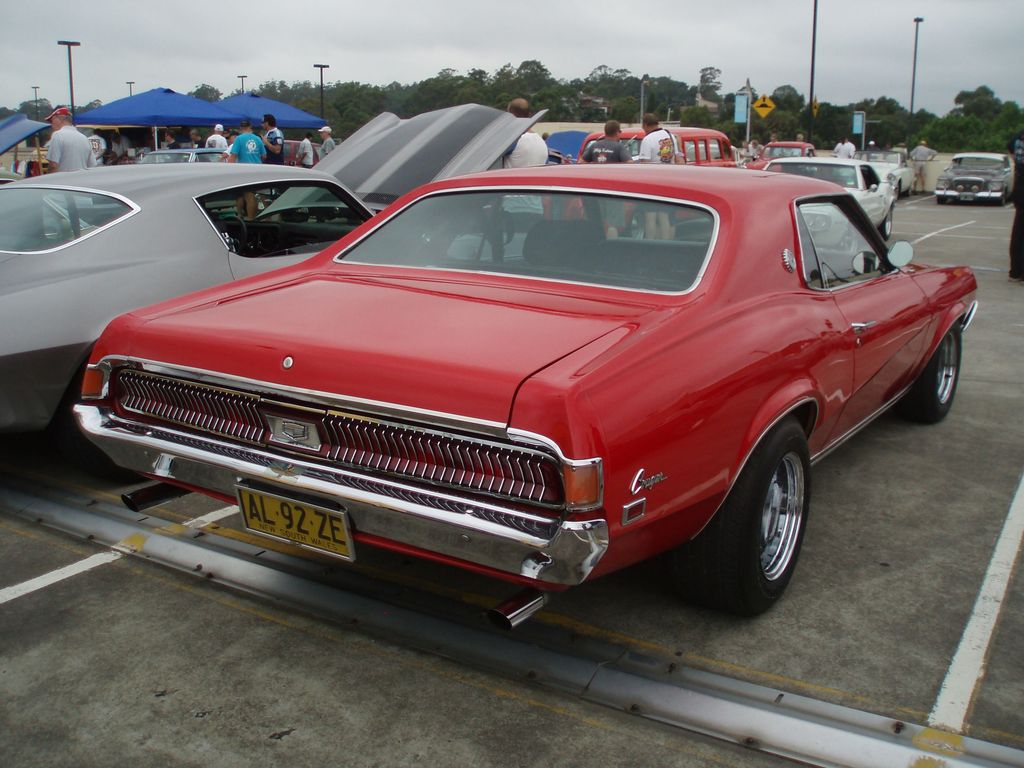
10. **Mercury Cougar**For enthusiasts seeking the undeniable allure of classic American muscle car styling but at a more approachable price point than some of its more famous contemporaries, the Mercury Cougar, especially the first generation from 1967-1970, offers a compelling alternative. This model distinguished itself by providing a slightly more luxurious and refined feel compared to its platform-sharing cousin, the Ford Mustang.
The Cougar’s design boasted several unique touches, most notably its distinctive hidden headlights and a slightly larger, more upscale body that exuded sophistication. Under the hood, a wide array of engine options were available, ranging from more sedate choices suitable for cruising to potent V8s capable of delivering exhilarating performance. This diversity allowed buyers to tailor their Cougar to their specific desires for power and comfort.
Beyond its stylistic distinctions and performance versatility, the Mercury Cougar provided a remarkably comfortable experience, making it an excellent choice for long drives and road trips. Its unique aesthetic ensured it stood apart from other muscle cars of the era, offering a blend of power, style, and a touch of luxury that continues to captivate collectors and drivers who appreciate its distinctive character.
Car Model Information: 1978 Mercury Cougar XR7
Name: Mercury Cougar
Caption: 1969 Mercury Cougar (first generation)
Manufacturer: Mercury (automobile)
Layout: Front-engine, rear-wheel-drive layout
ModelYears: 1967–1997,1999–2002
Class: Pony car,Personal luxury car,Mid-size car,Sport compact
Categories: 1960s cars, 1970s cars, 1980s cars, 1990s cars, 2000s cars
Summary: The Mercury Cougar is a series of automobiles that was sold by Mercury from 1967 to 2002. The model line is a diverse series of vehicles; though the Cougar nameplate is most commonly associated with two-door coupes, at various stages in its production, the model also was offered as a convertible and a hatchback. During its production as the mid-size Mercury line, the Cougar was also offered as a four-door sedan and five-door station wagon.
In production for 34 years across eight generations (skipping the 1998 model year), the Cougar is second only to the Grand Marquis (36 years) in the Mercury line for production longevity. 2,972,784 examples were produced, making it the highest-selling Mercury vehicle. During the 1970s and 1980s, the marketing of the Mercury division was closely associated with the Cougar, with promotional materials advertising Mercury dealers as “The Sign of the Cat” with big cats atop Lincoln-Mercury dealer signs. Cat-related nameplates were adopted by other Mercury lines, including the Bobcat and Lynx.
During its production, the Cougar was assembled at the Dearborn Assembly Plant (part of the Ford River Rouge Complex) in Dearborn, Michigan from 1967 until 1973, San Jose Assembly (Milpitas, California) from 1968 into early 1969, Lorain Assembly (Lorain, Ohio) from 1974 until 1997, and at Flat Rock Assembly (Flat Rock, Michigan) from 1999 through 2002.
Get more information about: Mercury Cougar
Buying a high-performing used car >>>
Brand: Mercury Model: Cougar
Price: $8,500 Mileage: 31,388 mi.
Read more about: Rock Legend Jeff Beck: A Look Inside His Epic Collection of American Muscle and Hot Rods
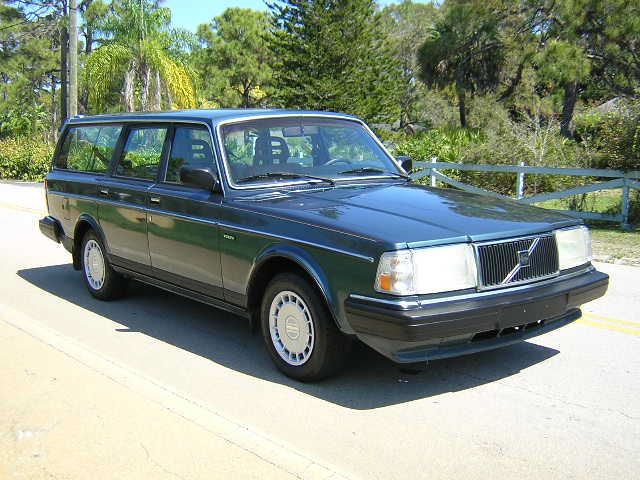
11. **Volvo 240**The Volvo 240, in production for an impressive span from 1974 to 1993, is an automotive legend renowned not for blistering speed or flashy design, but for its unparalleled durability and a distinctive, utilitarian charm. Its unmistakable boxy shape has become an icon of longevity and reliability, a testament to the fact that these cars were quite simply built to last, with many examples still faithfully serving their owners today.
Available in both practical sedan and versatile wagon versions, the 240 offered a unique blend of classic style and everyday usability. Owners consistently praise its comfortable interior, particularly its supportive seats, and its reputation for being remarkably safe for its time. Furthermore, the straightforward mechanical design of the 240 makes it surprisingly easy to work on, endearing it to DIY enthusiasts and minimizing maintenance costs.
The Volvo 240’s no-nonsense design and rock-solid reputation for reliability have fostered a deeply loyal following. It represents a different kind of classic car ownership: one focused on dependable service, enduring practicality, and a quirky character that sets it apart from the typical sports or muscle car. For those seeking a classic that offers peace of mind and effortless daily enjoyment, the 240 remains an outstanding choice.
Car Model Information: 1993 Volvo 240 Base 4dr Sedan
Name: Volvo 200 Series
Caption: 1989 Volvo 240 GL station wagon
Manufacturer: Volvo Cars
Production: 1974–1993,2,862,573 produced
ModelYears: 1975–1993
Assembly: Torslanda,Kalmar,Clayton, Victoria,Ghent,Halifax, Nova Scotia,Turin,Volvo 262C,name=262C, Italy,group=N
Predecessor: Volvo 140 Series,Volvo 164
Successor: Volvo 850,Volvo 760
Class: Mid-size car
BodyStyle: Sedan (automobile),4-door sedan,station wagon
Layout: Front-engine, rear-wheel-drive
Platform: Volvo P platform
Related: Volvo 262C
Engine: collapsible list
Title: Petrol and diesel engines
Transmission: 4-speed manual,4-speed manual with overdrive,5-speed manual,3-speed automatic,4-speed automatic
Wheelbase: 104.3 in
Abbr: on
Length: convert
Width: convert
Height: convert
Designer: Jan Wilsgaard
Categories: 1980s cars, 1990s cars, All articles needing additional references, All articles with incomplete citations, All articles with unsourced statements
Summary: The Volvo 200 Series (designated internally as the 240 and 260 models) was a range of mid-size cars manufactured by Swedish automaker Volvo Cars from 1974 to 1993. Designed by Jan Wilsgaard, the series was developed from the Volvo 140 Series and incorporated safety innovations from Volvo’s VESC experimental safety vehicle program.
The 200 Series was produced in sedan, station wagon, and limited convertible body styles. Over 2.8 million units were manufactured during its 19-year production run, making it one of Volvo’s most successful model lines. The series established Volvo’s reputation for safety and durability, with many examples remaining in service decades after production ended.
Production overlapped with the introduction of the Volvo 700 Series in 1982. While the 260 Series was discontinued in 1984 and replaced by the 700 Series, the popular 240 model continued production until 1993. The final 240 was manufactured on 14 May 1993, concluding nearly two decades of production and marking the end of an era for Volvo’s traditional rear-wheel-drive architecture.
Get more information about: Volvo 200 Series
Buying a high-performing used car >>>
Brand: Volvo Model: 240
Price: $6,988 Mileage: 136,517 mi.
Read more about: Navigating the Automotive Landscape: Your Essential Guide to the Best and Worst Cars for Your Money
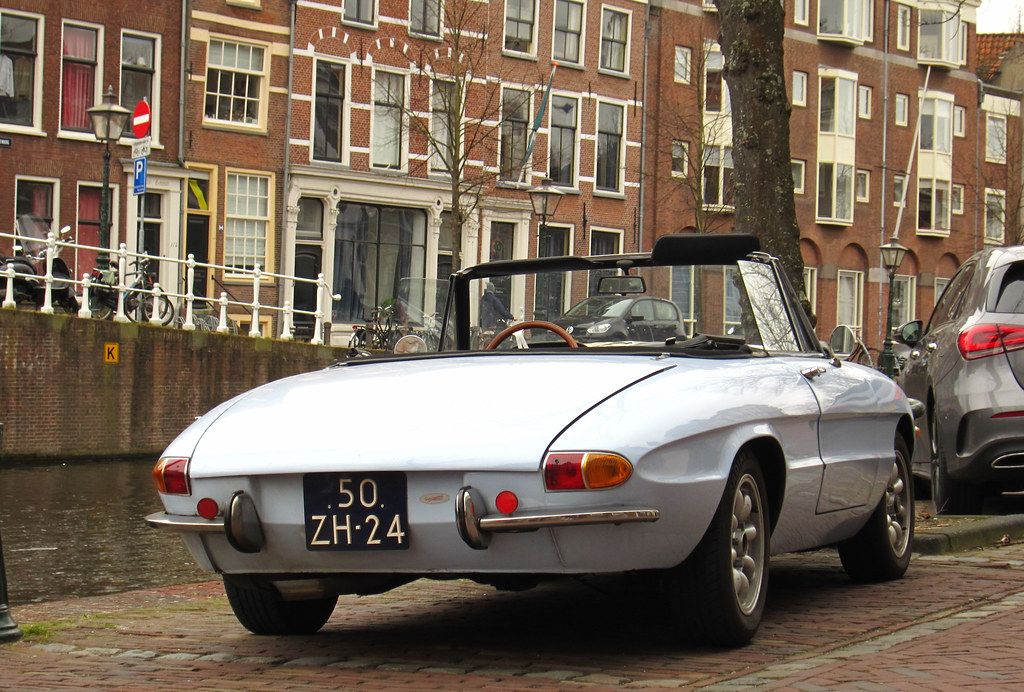
12. **Alfa Romeo Spider**Stepping into the world of Italian automotive artistry doesn’t necessarily demand a millionaire’s budget, as elegantly proven by the Alfa Romeo Spider. This iconic Italian sports car, with a remarkably long production run from 1966 to 1994, brought undeniable style and flair to the masses at a surprisingly affordable price point. Its timeless design, characterized by graceful lines and an undeniable sense of motion, continues to turn heads wherever it gracefully rolls.
The true magic of the Alfa Romeo Spider lies in its driving dynamics. Enthusiasts consistently laud its lively handling, which provides a nimble and engaging experience on twisting roads. Complementing this spirited performance is the unique and intoxicating sound of its engine—a mechanical symphony that is distinctly Alfa, adding another layer of passion to the driving experience and defining its charismatic appeal.
While it is true that sourcing parts for an Alfa Romeo Spider can occasionally present more of a challenge compared to some domestic classics, the sheer joy and character offered by the driving experience make it unequivocally worth the effort for many dedicated classic car fans. The Spider is more than just a car; it is an emotional connection to a rich automotive heritage, delivering an authentic European sports car feel without the prohibitive costs.
Car Model Information: 2020 BMW X3 xDrive30i
Name: Alfa Romeo Spider
Caption: Alfa Romeo Spider Series 2 (“Coda Tronca”)
Aka: Alfa Romeo “Duetto”
Manufacturer: Alfa Romeo
Assembly: Grugliasco,Turin
Production: 1966–1993
ModelYears: 1966–1994
Class: Sports car
Layout: Front-engine, rear-wheel-drive layout
BodyStyle: Roadster (automobile)
Related: Alfa Romeo Giulia,Alfa Romeo 105/115 Series Coupés
Designer: Aldo Brovarone
Predecessor: Alfa Romeo Giulietta (750/101)
Successor: Alfa Romeo GTV & Spider
Sp: uk
Categories: 1970s cars, 1980s cars, 1990s cars, Alfa Romeo vehicles, All articles needing additional references
Summary: The Alfa Romeo Spider (105/115 series) is a two-seater, front-engined, rear-drive roadster manufactured and marketed by Alfa Romeo from 1966 to 1994 in four distinct generations, or “series”, each with modifications ranging from modest to extensive.
As successor to the Giulia Spider, the Spider remained in production for almost three decades. The first three series were assembled by Pininfarina in Grugliasco and the fourth series in San Giorgio Canavese. The last Spider of that series was manufactured in April 1993—the last rear-wheel drive Alfa Romeo before the Alfa Romeo 8C Competizione of 2007.
In 2012, FCA Italy and Mazda studied the possibility of jointly developing a new Spider for 2015 based on the Mazda MX-5 platform. Ultimately, FCA and Mazda chose to manufacture a modern interpretation of the Fiat 124 Sport Spider rather than reviving the Alfa Romeo Spider.
Get more information about: Alfa Romeo Spider
Buying a high-performing used car >>>
Brand: Alfa Romeo Model: Spider
Price: $19,649 Mileage: 66,810 mi.
Read more about: Unveiling America: A Journey Through the United States’ Rich Tapestry of History, Geography, and Enduring Global Influence
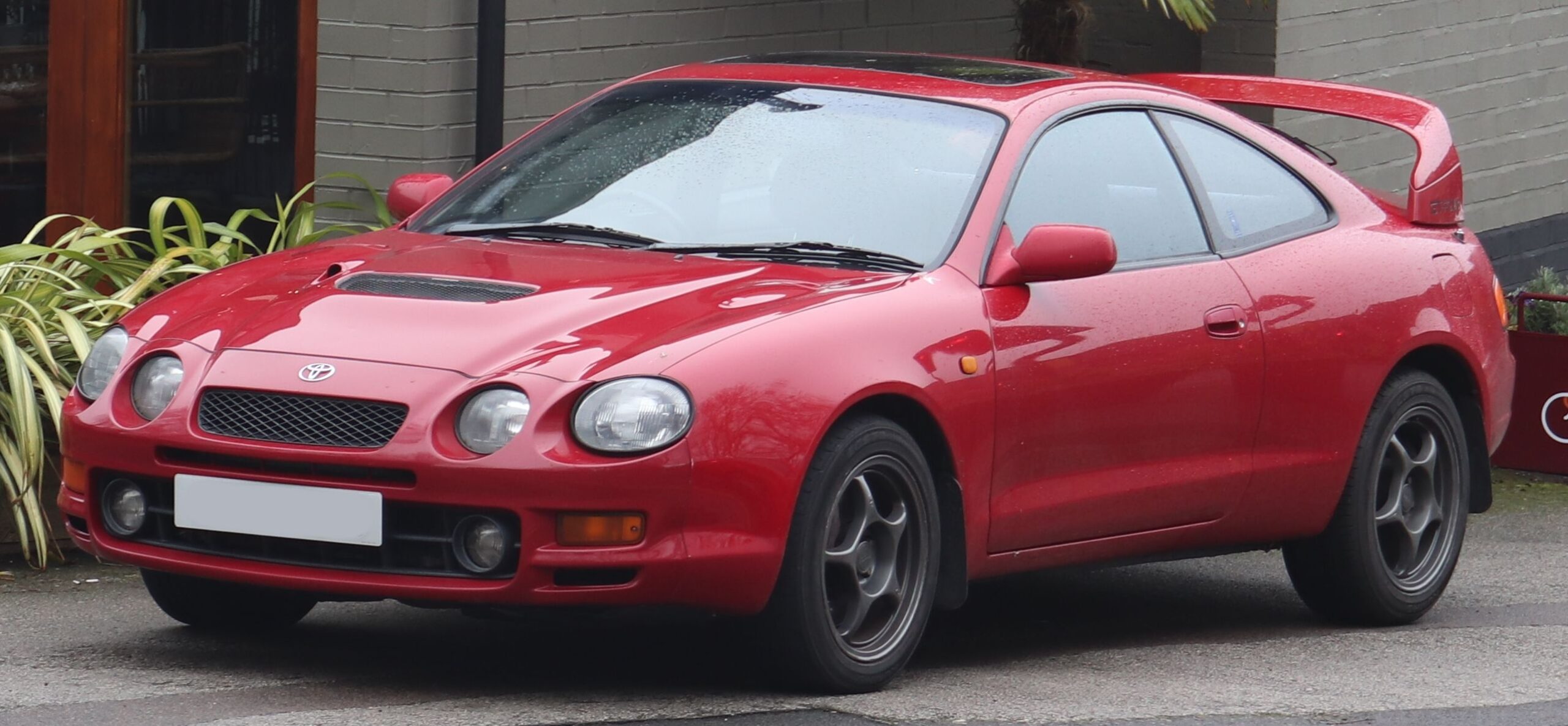
13. **Toyota Celica**Hailing from Japan, the Toyota Celica, particularly models from the 1970s and 1980s, masterfully blends the best of both worlds: renowned Japanese reliability with a genuinely sporty package. These cars were designed with a sleek aesthetic that drew clear inspiration from the bold lines of American muscle cars, offering a distinctive global appeal that resonated with a wide audience. The Celica quickly earned a reputation for its balanced performance and engaging driving characteristics.
Owners consistently highlight the Celica’s enjoyable driving experience, which is both responsive and reassuringly predictable. Furthermore, its legendary Toyota build quality translates into ease of maintenance, making it a practical and trouble-free classic to own and operate. With various body styles available, including both coupe and liftback versions, buyers had the flexibility to choose a model that perfectly suited their individual preferences and practical needs.
The enduring appreciation for the Toyota Celica stems from its remarkable ability to seamlessly blend spirited performance with unwavering practicality. It offers a unique opportunity to own a piece of automotive history that provides both exciting drives and the peace of mind that comes with proven reliability. For those seeking an affordable classic that delivers on both fun and function, the Celica stands out as an exceptionally smart choice.
Car Model Information: 1988 Toyota Celica GT
Name: Toyota Celica
Caption: 1994 Toyota Celica GT-Four (ST205, UK)
Manufacturer: Toyota
Production: December 1970
ModelYears: 1971–2005
Assembly: Susono,Shizuoka Prefecture
Class: Sports car
BodyStyle: unbulleted list
Layout: unbulleted list
Categories: 1980s cars, 1990s cars, 2000s cars, Accuracy disputes from August 2020, All-wheel-drive vehicles
Summary: The Toyota Celica ( or ) (Japanese: トヨタ・セリカ, Hepburn: Toyota Serika) is an automobile produced by Toyota from 1970 until 2006. The Celica name derives from the Latin word coelica meaning heavenly or celestial. In Japan, the Celica was exclusive to Toyota Corolla Store dealer chain. Produced across seven generations, the Celica was powered by various four-cylinder engines, and body styles included convertibles, liftbacks, and notchback coupé.
In 1973, Toyota coined the term liftback to describe the Celica fastback hatchback, and the GT Liftback would be introduced for the 1976 model year in North America. Like the Ford Mustang, the Celica concept was to attach a coupe body to the chassis and mechanicals from a high volume sedan, in this case the Toyota Carina.
The first three generations of North American market Celicas were powered by variants of Toyota’s R series engine. In August 1985, the car’s drive layout was changed from rear-wheel drive to front-wheel drive, and all-wheel drive turbocharged models were manufactured from October 1986 to June 1999. Variable valve timing came in certain Japanese models starting from December 1997 and became standard in all models from the 2000 model year. In 1978, a restyled six-cylinder variant was introduced as the Celica Supra (Celica XX in Japan); it would be spun off in 1986 as a separate model, becoming simply the Supra. Lightly altered versions of the Celica were also sold through as the Corona Coupé through the Toyopet dealer network from 1985 to 1989, and as the Toyota Curren through the Vista network from 1994 to 1998.
Get more information about: Toyota Celica
Buying a high-performing used car >>>
Brand: Toyota Model: Celica
Price: $5,588 Mileage: 162,656 mi.
Read more about: Ford Mustang: The Last V8 Muscle Car Standing?
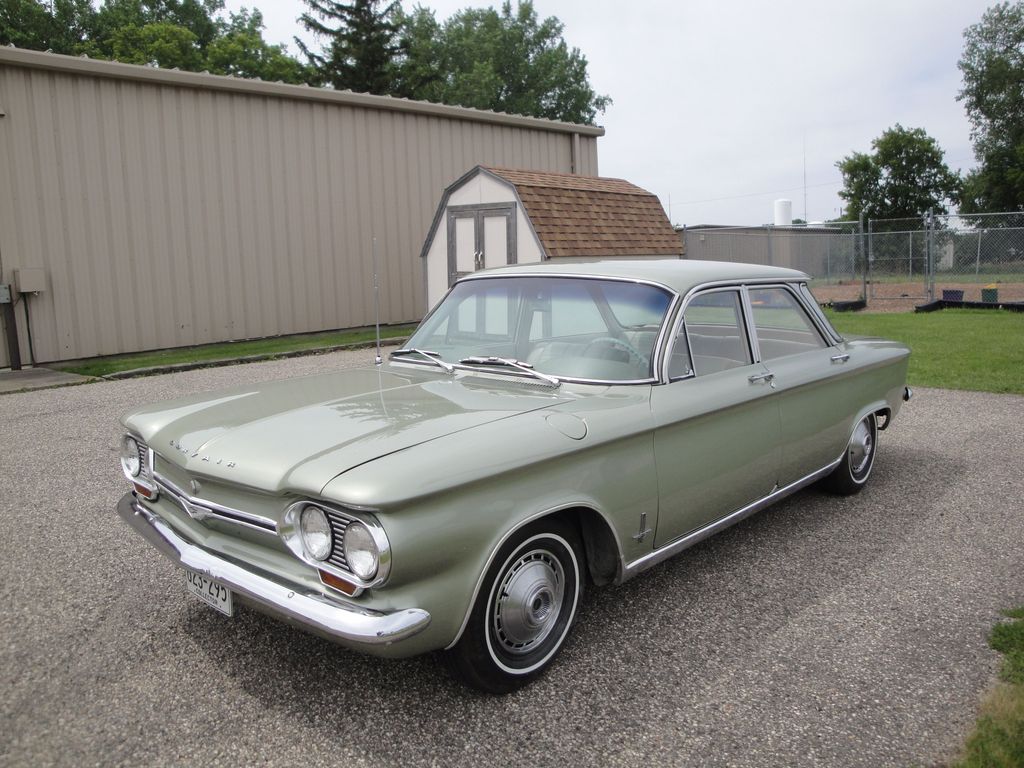
14. **Chevrolet Corvair**The Chevrolet Corvair, manufactured from 1960 to 1969, stands as one of the most unique and innovative American cars ever produced, distinguished primarily by its rear-mounted, air-cooled engine. Breaking away from traditional Detroit designs, the Corvair offered a refreshingly different approach to American motoring, challenging conventional engineering norms and presenting a truly distinct package to the public.
Beyond its unconventional powertrain, the Corvair impressed with its wide array of body styles, including practical sedans, stylish coupes, and even functional vans, showcasing its versatile platform. While known for its unusual design and at times, interesting handling characteristics—a subject of some controversy upon its initial release—the Corvair’s unconventional nature has only added to its allure and historical significance over time.
Today, the Chevrolet Corvair is increasingly appreciated by collectors and enthusiasts for its pioneering engineering and bold departure from the norm. It provides a truly different kind of classic American motoring experience, one that is rooted in innovation and individuality. Owning a Corvair is a statement, a nod to a period when American automakers dared to experiment, offering a unique and affordable slice of automotive history.
Car Model Information: 1964 Chevrolet Corvair Monza
Caption: 1964 Chevrolet Corvair Monza
Name: Chevrolet Corvair
Manufacturer: Chevrolet
Production: 1960–1969
Platform: GM Z platform
Chassis: Unibody
ModelYears: 1960–1969
Assembly: United States,Kansas City, Missouri,Oakland, California,Van Nuys,St. Louis,Flint, Michigan,Belgium,Canada,Mexico,South Africa,Switzerland,Venezuela
Class: Compact car
Successor: Chevrolet Vega
Layout: Rear-engine, rear-wheel-drive layout
Categories: All Wikipedia articles written in American English, All articles lacking in-text citations, All articles needing additional references, All articles with dead external links, All articles with specifically marked weasel-worded phrases
Summary: The Chevrolet Corvair is a rear-engined, air-cooled compact car manufactured and marketed by Chevrolet over two generations between 1960 and 1969. The Corvair was a response to the increasing popularity of small, fuel-efficient automobiles, particularly the imported Volkswagen Beetle and the success of American-built compacts like the Rambler American and Studebaker Lark.
The first generation (1960–1964) was offered as a four-door sedan, two-door coupe, convertible, and four-door station wagon. A two- and four-door hardtop and a convertible were available second generation (1965–1969) variants. The Corvair platform was also offered as a subseries known as the Corvair 95 (1961–1965), which consisted of a passenger van, commercial van, and pickup truck variant. Total production was approximately 1.8 million vehicles from 1960 until 1969.
The name “Corvair” was first applied in 1954 to a Corvette-based concept with a hardtop fastback-styled roof, part of the Motorama traveling exhibition. When applied to the production models, the “air” part referenced the engine’s cooling system.
A prominent aspect of the Corvair’s legacy derives from controversy surrounding its handling, articulated aggressively by Ralph Nader’s Unsafe at Any Speed and tempered by a 1972 Texas A&M University safety commission report for the National Highway Traffic Safety Administration (NHTSA) which found that the 1960–1963 Corvair possessed no greater potential for loss of control in extreme situations than contemporary compacts.
To better counter popular inexpensive subcompact competitors, notably the Beetle and Japanese imports such as the Datsun 510, GM replaced the Corvair with the more conventional Chevrolet Vega in 1970.
Get more information about: Chevrolet Corvair
Buying a high-performing used car >>>
Brand: Chevrolet Model: Corvair
Price: $29,988 Mileage: 74,787 mi.
Read more about: 19 Hilariously Bad Cars That Became Unforgettable Icons
As we conclude our exploration of surprisingly affordable classic cars, it becomes abundantly clear that the joy of vintage motoring is not exclusive to the elite. The open road, filled with the rumble of a classic engine and the unmistakable scent of bygone eras, beckons to all who possess a passion for automotive history. These machines, with their unique stories and undeniable character, offer a tangible connection to a simpler, more visceral driving experience. Whether you seek the nimble spirit of a British roadster, the rugged charm of an American pickup, or the understated elegance of a European saloon, the accessible classics we’ve highlighted prove that your dream ride is not just a fantasy, but a wonderfully attainable reality waiting to be driven home. Now is the perfect moment to join the ranks of classic car owners, to turn heads, ignite conversations, and truly savor the journey. The world of affordable classics is vibrant, welcoming, and full of possibilities for every enthusiast ready to embrace the adventure.” , “_words_section2”: “1948


